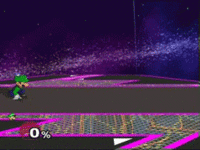Exploit
An exploit is a product of one or more video game mechanics working as intended, but causing unintended results. They alter gameplay by causing events or actions to occur that were not intended by the game's designers.
Overview[edit]
The main reason an exploit exists is that the player discovers a method of using system mechanics in ways that the developers did not take into account during the design phase, resulting in unintended side effects. Exploits were either never encountered during a game's testing, or were simply not addressed before a game officially released. The larger and more complex a game is, the more likely exploits are to exist, simply due to the increased difficulty in testing every possible situation and figuring out how to address the issue without breaking other parts of a game. Exploits are not to be confused with glitches, which are caused the game specifically not working as intended. Exploits specifically involve multiple gameplay elements working as intended, yet yielding unintended results.
By definition, exploits can cause a wide variety of effects on the game itself. These include skipping portions of the game, making initially difficult parts of the game trivial, breaking in-game economies if they exist, and altering the metagame if the game has multiplayer modes. Typically, exploits are not harmful to the players' experience and can be indirect quality of life improvements towards a game. Some exploits have become so popular that game developers intentionally program them into the game as features in later installments. However, some exploits can be seen as harmful, especially if they negatively impact the experience of others. These exploits typically get patched out of games that have the privilege of receiving updates.
In the Super Smash Bros. series[edit]
Many exploits have been discovered throughout the Smash series. While those found in SSB, Melee, and Brawl can be found to this day due to developers not being able to alter code on printed physical media after release at the time, some can only be found in specific versions due to it being patched out of later reprints. Smash 4 and Ultimate have the privilege of receiving update patches after release, allowing exploits to be dealt with in a timely matter at relatively little cost.
Through a competitive lens, exploits are complicated to deal with, as some are considered worse than others. By default, exploits are considered tournament-legal, as most are either considered not obtrusive enough to address or are even considered beneficial to the metagame. Examples include wavedashing in Melee and Ultimate and the omnigay in Brawl and Ultimate, both of which require a certain level of skill and situational awareness to consistently achieve. However, some exploits have been deemed "degenerate" to competitive integrity, either by requiring relatively low skill or having extremely low risk and high reward. Examples include the various forms of wobbling across the series or abusing ledge intangibility in early entries to stall for time or create an unfair advantage. These exploits are usually banned and guilty parties are punished accordingly.
The subsect of the Smash community that partakes in speedruning takes a different approach to handling exploits. Typically, the any% category allows any and all exploits while the glitchless category only allows exploits that are not considered glitches. That being said, an exploit is sometimes discovered that cuts down so much time that it completely invalidates all runs that came before. In order to prevent said previous runs from falling into obscurity, a branch of the any% category is often created that disallows this newfound exploit and potentially others. That way, the main any% category can continue to innovate while those that want to continue the "traditional" way still have the option to develop an insular community.
